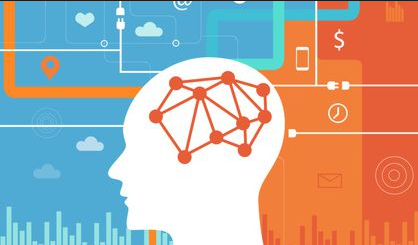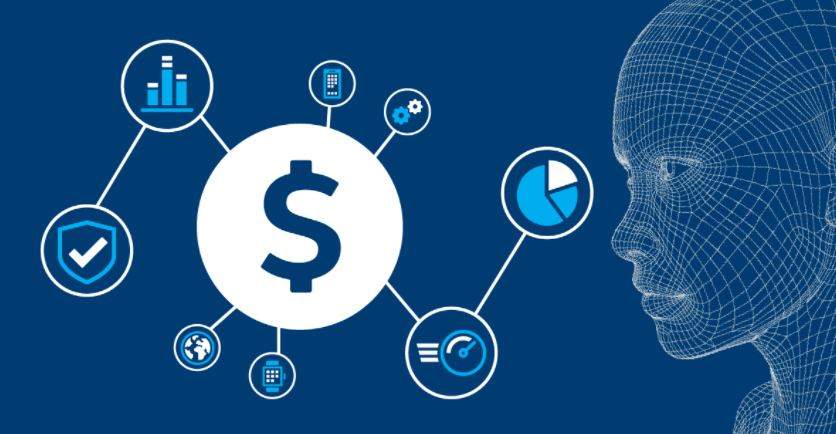How Artificial Intelligence will revolutionise African Banking
Do you want to manage AI between USA and Africa?
Contact us here, mayado@sylodium.com for be our blogger managing the niche you choose: Tanzania – Chicago, Nigeria – Florida, Africa – USA, Silicon Valley – Africa in AI
We are in AI and fresh veggies between USA and Africa,
if you are a good thinker, visionary, hard studious, you can become our blogger in the niche you choose so we (you and us) will win money together.
Tap our unique Crossing System.
New from ITNewsAfrica.com
How Artificial Intelligence Will Revolutionise Banking
Artificial Intelligence gets a bad rap in pop culture. Movies like Terminator (with its rebellious Skynet) and 2001 (with its murderous HAL 9000) portray a future where the robots get smart, and conclude that it is in their interests to try and destroy mankind.
But the truth about AI is a lot more mundane. Most of us use AI every day when we talk and interact with Siri or Google on our phones and AI is why Netflix knows what movies you’ll like and what other products you’ll want to buy on Amazon.
And AI is poised to become a big deal in banking. An Accenture poll of more than 600 bankers reveals that 79 percent believe AI will revolutionize how banks learn from and interact with customers; 76 percent believe that AI interfaces will be the primary point of contact between banks and customers within three years; and 71 percent think AI can be the face of their brand.

AI encompasses three different technologies: Language processing that allows computers to “talk” with humans; machine learning where computers compare new information with existing data to find patterns, similarities and differences; and expert software systems that provide personalised advice. At its best, machines learn from experiences and can interact with humans and behave in ways that mimic the human brain.
Robots and artificial intelligence are already being embraced by banks around the world, both in branches and in back offices. At City Union Bank in the Indian city of Chennai, a robot called Lakshmi tells customers about their account balances and the current interest rates on mortgages. At the Bank of Tokyo Mitsubishi UFJ, a robot called Nao analyses facial expressions and behavior as it interacts with customers in Japanese, English and Chinese. Lakshmi and Nao are early, visible signs of how banks can use AI to personalize the banking experience.
In South Africa, AI is not new, but the move of AI beyond process to interaction with customers is new. AI is coming of age, tackling problems both big and small by making interactions simple and smart. It is becoming the new user interface in the banking space and underpinning the way we transact and interact with systems. Nearly two-thirds (63 percent) of South African bank respondents in the recent Technology Vision for banking research agree that AI will revolutionise the way they gain information and interact with customers.
Now, banks in the U.S are also starting to catch on. Capital One customers can check their accounts and pay credit card bills by talking to Amazon’s Alexa and HSBC customers can quiz the bank’s virtual online assistant Olivia who can answer questions about security and other issues and learns from the effectiveness of her answers. Santander has voice banking, powered by Nuance’s virtual assistant Nina, which allows customers to make transfers and payments based on voice recognition authentication. And, RBS has developed Luvo – a customer service pop-up window that asks customers online if they need help with simple tasks, freeing staff to work on resolving more complex problems. At Accenture, we’ve built Collette – a virtual mortgage adviser that asks customers questions in a natural conversational style and generates personally-tailored advice.

But these cool services are only the first step. Banks need to start using AI to streamline the process of applying for loans or to reimagine ATM interactions to reflect the customer’s typical needs, giving customer’s a blank screen to start with, for example, rather than a standard menu. In the end, AI will help banks truly customise the banking experience by making personalised recommendations and advice. Your bank’s AI might notice from your deposits that your salary has increased and will suggest ways to save more for retirement, or that you just started purchasing diapers for the first time and maybe it’s time to start a college savings account.
Crunching a trove of customer data – everything from banking to automotive records and credit bureau reports – will give banks a clearer picture than ever before of what their customers might want from a financial institution. That’s important because more than two-thirds (67 percent) of bankers say they currently struggle to understand their customers’ needs.
But as banks move forward, they have to make sure they don’t lose the human touch where it’s needed. AI can delight customers and make their transactions quicker and easier. But it can’t completely replace people. In many situations, from personal interactions to nuanced understanding of someone’s financial status, customers need to work with human beings.A Weber Shandwick survey reveals that, while more than half of consumers say they would trust AI to provide financial guidance, 52 percent of people are concerned about the possibility of stolen data or invasion of privacy — concerns that banks can address by applying extra levels of security around complex transactions such as transferring money between accounts.
Incorporating AI will make banks more efficient, save them money and will make staff more productive by freeing them up to help customers in a more targeted way. And, as we have noticed from other disruptive technologies, once other banks have embraced these advances they will become a mandatory component of any banking offering to retain customers and gain new ones.

Companies should take three steps to ensure that they get it right with AI: 1) Create a clear strategy for using customer data and define how AI tools can best leverage that information; 2) Consider developing an AI Center of Excellence to spearhead the effort; 3) Create a test-and-learn environment to accelerate innovation and to explore how machines can add the cognitive processes of perception, learning and reasoning.
It’s inevitable that customers will have fewer visits at bank branches, but these few interactions with human staff will become more important to customer satisfaction. That means that the bank of the future will need to blend a mix of AI and human interactions if they want to be successful. What we see around us is just the beginning.
By Kele Boakgomo, Managing Director for Financial Services practice at Accenture in South Africa
Artificial Intelligence - 21/02/2018
Artificial Intelligence - 07/02/2018
Artificial Intelligence - 15/12/2017
Artificial Intelligence - 27/11/2017

